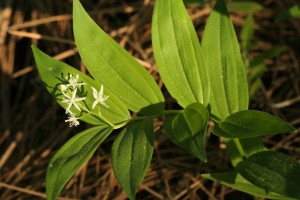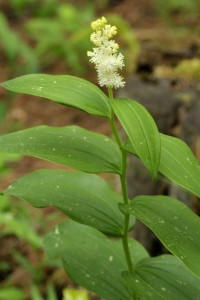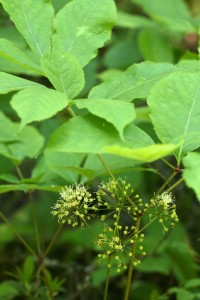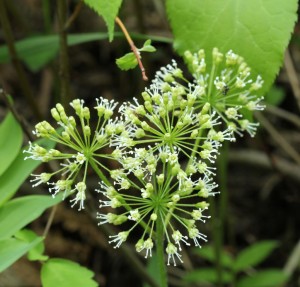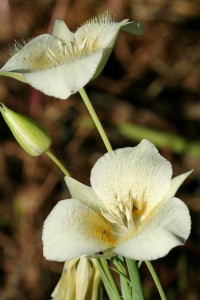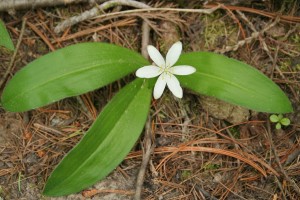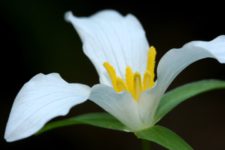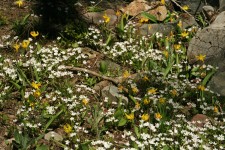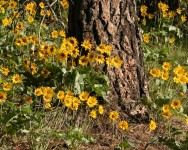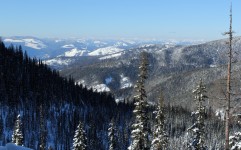Early spring wildflowers, such as trilliums, are blooming at higher elevations as the snow recedes and the ground warms. At lower elevations summer wildflowers are blooming including several with white flowers. Starry Solomon’s Seal, false Solomon’s Seal, wild sarsaparilla, mariposa and Queen’s cup are some of our white wildflowers.
Starry Solomon’s Seal (Smilacina stellata)
Dense colonies of starry Solomon’s Seal bloom in the partial shade of forests. Alternating leaves growing along the stalk lead up to the creamy white, starry-looking flowers numbering 12 or fewer at the end. The stalk grows between 12 to 24 inches high. After pollination, the round, greenish yellow berries mature into dark blue/reddish black berries.
Starry Solomon’s Seal is similar to false Solomon’s Seal except that each flower grows on a separate flower stalk.
As with many flowers, Smilacina stellata is known by many names including starry Solomon’s Seal, star-flowered false Solomon’s Seal, star Solomon’s Seal and starry false lily of the valley.
False Solomon’s Seal (Maianthemum racemosum or Smilacina racemosa)
Similar to the starry Solomon’s Seal, false Solomon’s Seal also has alternating leaves but the flowers are in clusters at the end of the stalk. The large, showy clusters consist of 20 or more small, white flowers in tight clusters two to five inches long.
After pollination immature green berries give way to mature bright red berries in the moist forests they inhabit. False Solomon’s Seal often grows in clumps because they spread from rhizomes (underground stems).
Many flowers have multiple common names (false Solomon’s Seal is also known as spikenard) but false Solomon’s Seal has two scientific names–Maianthemum racemosum or Smilacina racemosa–depending on which classification scheme is utilized.
Wild Sarsaparilla (Aralia nudicaulis)
Large colonies of wild sarsaparilla can carpet the understory of moist, shady forests with the leaves hiding the flowers. The short plants (less than knee-high) have compound leaves in three main divisions with each division bearing three to five toothed leaflets. The leaflets almost form an elevated carpet of green as they seem to grow parallel to the ground.
Hidden under the leaves are ball-shaped clusters of small, greenish-white flowers with three to seven clusters per plant. Male and female flowers grow on separate plants. After pollination, the female clusters give rise to dark purple, plump berries.
Three-spot Mariposa Lily (Calochortus apiculatus)
Creamy white saucer-shaped flowers growing in grassy meadows and dry hillsides are most likely mariposa. The three petals are fringed along the sides and hairy on the lower inside-half of the petal. The three-spot mariposa lily (also known as mariposa, Baker’s mariposa lily and pointed tip mariposa lily) has a small purple spot near the base of the petal.
The markings on the petals often resemble butterfly wings which is how mariposa received its name (mariposa is the Spanish word for butterfly). The elegant flower is complemented by a single, grass-like leaf arising from the base.
Queen’s Cup (Clintonia uniflora)
Extensive systems of rhizomes create colonies of the simple Queen’s cup in shaded, moist forests. Two to three oblong, shiny leaves surround the base of the flowering stalk that gives rise to a solitary white flower. The six petals form a cup-shaped flower two to six inches off the ground.
The Queen’s cup’s beauty extends after pollination when the single berry turns bright metallic-blue. The blue berry lends the plant to its other common names, blue-bead clintonia and blue-bead lily.

